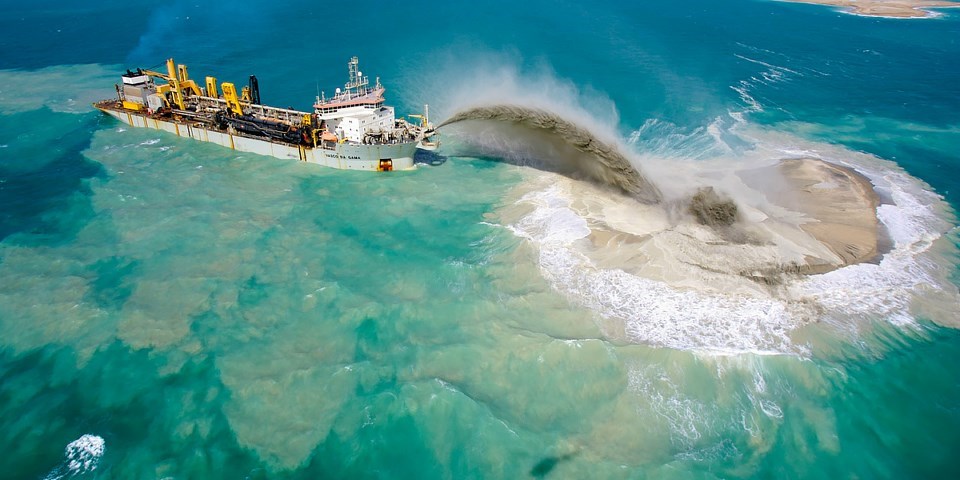Palm Jumeirah is one of the most famous man-made islands in the world. It is a symbol of Dubai’s rapid growth and innovative spirit. But have you ever wondered how Palm Jumeirah was built? This article will take you through the incredible journey of constructing this unique island, the challenges faced, and the engineering marvels involved. Whether you are a fan of architecture, engineering, or just curious about this amazing project, you will find this story fascinating.
What is Palm Jumeirah?
Palm Jumeirah is an artificial archipelago in the shape of a palm tree, located off the coast of Dubai, United Arab Emirates. It is part of a larger project called the Palm Islands, which also includes Palm Jebel Ali and Palm Deira. The island has luxury hotels, villas, apartments, restaurants, and entertainment facilities. It covers about 5.72 square kilometers and extends into the Arabian Gulf.
The idea behind Palm Jumeirah was to increase Dubai’s coastline and create a luxury residential and tourism destination. But building an entire island from scratch was not an easy task. It required advanced engineering techniques and a lot of careful planning.

The Vision Behind Palm Jumeirah
The project was launched in 2001 by Nakheel Properties, a Dubai-based real estate developer. Sheikh Mohammed bin Rashid Al Maktoum, the ruler of Dubai, wanted to create something that would put Dubai on the map as a global tourist destination. The vision was to build a world-class island shaped like a palm tree, combining nature and modern luxury.
The palm tree shape was chosen for its cultural significance in the region and for maximizing the coastline. The trunk, fronds, and crescent breakwater would provide plenty of beachfront properties and protect the island from strong sea waves.

How Palm Jumeirah Was Built: The Engineering Process
1. Planning and Design
Before any construction began, extensive planning and design work took place. The project needed to ensure environmental sustainability, structural stability, and aesthetic beauty. Experts in marine engineering, geotechnical engineering, and urban planning collaborated to create a detailed blueprint.
2. Land Reclamation
The most important part of how Palm Jumeirah was built was land reclamation. This means creating new land by adding sand and rock to the sea. The process involved dredging sand from the seabed and spraying it to form the shape of the island.
- Sand Dredging: A fleet of powerful dredgers sucked sand from the sea floor located about 6 kilometers offshore. This sand was then transported by pipelines and sprayed in precise locations.
- Nourishing the Island: The sand was carefully layered and compacted to create a solid base. This step took great skill to avoid erosion and ensure the island would withstand storms and tides.
3. Creating the Palm Shape
One of the biggest challenges in how Palm Jumeirah was built was shaping the sand to match the palm tree design. GPS technology and detailed computer models were used to guide the dredgers. The island consists of:
- The Trunk: A wide main road with residential and commercial buildings.
- The Fronds: 16 leaf-shaped extensions, providing private beachfront properties.
- The Crescent: A large crescent-shaped breakwater protecting the island from sea waves.
4. Building the Breakwater
The crescent-shaped breakwater is a huge sea wall that shields the island from waves and prevents erosion. It was constructed using millions of tonnes of rocks brought in from quarries.
- Rocks and Boulders: Large rocks were piled up to create a strong barrier.
- Sand Fencing: To further stabilize the sand, special sand fencing was installed.
- Erosion Control: The breakwater ensures that the sand on the island stays intact, even during rough weather.
5. Infrastructure Development
Once the landmass was created, the next step was building roads, utilities, and infrastructure.
- Roads and Bridges: Roads were laid along the trunk and fronds to connect different parts of the island.
- Water and Electricity: Pipelines and cables were installed to supply water, electricity, and telecommunications.
- Buildings: Developers began constructing luxury villas, hotels, and apartments.

Challenges Faced During Construction
Building Palm Jumeirah was not without problems. Here are some of the key challenges encountered:
- Environmental Concerns: Environmentalists worried about the impact on marine life and coastal ecosystems. Measures were taken to reduce damage, including relocating coral reefs and using environmentally friendly materials.
- Technical Difficulties: Shaping the island accurately required high precision. Any mistake could lead to erosion or structural issues.
- Logistics: Moving millions of tonnes of sand and rock was a massive operation requiring continuous coordination.
- Weather: Harsh marine conditions, such as storms and tides, posed risks during construction.
Despite these challenges, the project was completed successfully, showcasing Dubai’s commitment to innovation and quality.
The Impact of Palm Jumeirah
Palm Jumeirah has become one of Dubai’s biggest tourist attractions and a symbol of luxury living. It transformed the city’s coastline and added valuable real estate. The island’s hotels, like Atlantis The Palm, attract millions of visitors every year.
- Economic Growth: The island boosted tourism, real estate, and job opportunities.
- Global Recognition: Palm Jumeirah is often featured in travel magazines, films, and documentaries.
- Engineering Inspiration: The success inspired other similar projects worldwide.
Fun Facts About Palm Jumeirah
- It took approximately 5 years (2001-2006) to build the island’s landmass.
- Over 94 million cubic meters of sand and 7 million tonnes of rock were used.
- The island’s shape is so large it can be seen from space.
- The roads on Palm Jumeirah extend about 78 kilometers.
- The island is home to over 20,000 residents.
Conclusion
Learning how Palm Jumeirah was built gives us an appreciation for the incredible engineering and planning that went into creating this modern wonder. It is more than just an island—it represents human innovation, Dubai’s ambition, and a vision for the future. Whether you visit Palm Jumeirah or simply admire it from afar, its story is a testament to what can be achieved with determination, creativity, and technology.
Do follow UAE Stories on Instagram
Read More: Discover Dubai’s Most Magical Cultural Sites Loved by Tourists














